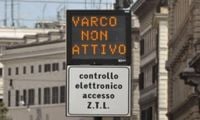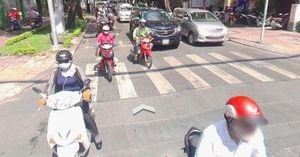Starting May 5, 2025, Lugo has implemented electronic access control in its historic pedestrian areas. This new initiative aims to regulate traffic and enhance the safety of pedestrians in the city center.
The electronic systems have been strategically installed at various access points, including via Vaccari (specifically at number 25, located in piazza Savonarola) and piazza Trisi, which is accessible from the church of Carmine at number 4, as well as on the Pavaglione side at number 29. Additional control systems are also set up in pedestrian zones such as via Matteotti, where it intersects with via Pisacane, and in piazza Baracca at number 6.
These pedestrian areas will only be operational during weekends, with the electronic gate system activated from 7:30 PM on Friday until midnight on Sunday. This schedule is designed to accommodate the increased foot traffic during leisure hours while ensuring that vehicles do not disrupt the pedestrian experience.
Initially, the electronic access control systems will operate in a "pre-exercise" phase until July 6, 2025. During this period, any violations detected through the electronic system will be recorded for statistical purposes only. However, local police officers will still be on hand to address any violations they observe directly, allowing them to issue immediate challenges to offenders.
The introduction of this system marks a significant step towards modernizing Lugo's traffic management and enhancing the quality of life for its residents and visitors. By controlling access to these popular pedestrian zones, city officials hope to reduce congestion and improve safety.
Local authorities have expressed optimism about the potential benefits of the electronic access control. They believe that by regulating vehicle entry, they can create a more inviting atmosphere for pedestrians, which is particularly important for local businesses that rely on foot traffic.
As the pre-exercise phase progresses, city officials will monitor the effectiveness of the electronic systems and gather data on traffic patterns and pedestrian safety. This information will be crucial for making any necessary adjustments to the system before its full implementation.
Community reactions to the new system have been mixed. Some residents and business owners have welcomed the initiative, citing concerns over safety and the need for better traffic management in the city center. Others, however, worry about the potential for increased fines and the implications for local drivers who may inadvertently violate the new regulations.
Despite these concerns, the Lugo administration is committed to seeing the project through and is confident that the long-term benefits will outweigh the initial challenges. They are also planning to engage with the community through informational sessions to address any questions or concerns residents may have about the new system.
In conclusion, Lugo's new electronic access control system represents a proactive approach to urban management, aiming to balance the needs of pedestrians and drivers while fostering a safer and more vibrant city center.




